chaos

 Halley’s comet, named after astronomer Edmond Halley, only passes by Earth every 76 years or so. These days, such an event would bring excitement, viewing parties, planned trips to nearby dark sights as far from the city lights as possible, but then we know much more about comets than the people of 1910, when Halley’s Comet visited. Of course, the internet wasn’t invented in 1910, nor were computers. People only had the news paper to get their news from. This was a big story. People were so excited, that telescope sales skyrocketed as the comet neared. Hotels even offered special deals, so people could gather on top of their roofs to watch the comet pass.
Halley’s comet, named after astronomer Edmond Halley, only passes by Earth every 76 years or so. These days, such an event would bring excitement, viewing parties, planned trips to nearby dark sights as far from the city lights as possible, but then we know much more about comets than the people of 1910, when Halley’s Comet visited. Of course, the internet wasn’t invented in 1910, nor were computers. People only had the news paper to get their news from. This was a big story. People were so excited, that telescope sales skyrocketed as the comet neared. Hotels even offered special deals, so people could gather on top of their roofs to watch the comet pass.
Of course, not everyone was pleased with the comet’s appearance. There were those who believed the shooting star would end civilization. That “brainstorm” was thanks to the mind of a French astronomer named Camille Flammarion, who believed the comet’s 24-million-mile long tail contained a poisonous cyanogen gas that “would impregnate the atmosphere and possibly snuff out all life on the planet” and and while the idea was totally crazy, many unsuspecting people believed the story and it caused chaos.
Part of the problem with misinformation is that some people…especially new media, known for the idea of sensationalistic stories that are scary enough or wild enough to sell papers, or in this day and age, airtime, whether the story is true, credible, or even honest. To the news media, truth is not the most important part of a story. You have to be able to catch the eyes, and hold the imaginations of the people or the story will quickly 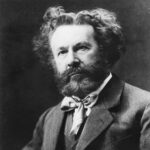 be relegated to the back of the paper. Unfortunately, The New York Times’ piece on Flammarion’s apocalyptic theory encouraged some less-trustworthy newspapers to run wild with the story. Following the story’s breaking, in addition to telescopes, people started ransacking stores for gas masks. Con men, or as we call them today, scammers made a killing by selling anti-comet pills, and some people worried the comet would “cause the Pacific to change basins with the Atlantic” and turn the world into “one heterogeneous mass of chaotic confusion.” Worried parishioners flocked to their churches, and according to science writer Matt Simon, people actually sealed up their keyholes to keep poison out of their homes.
be relegated to the back of the paper. Unfortunately, The New York Times’ piece on Flammarion’s apocalyptic theory encouraged some less-trustworthy newspapers to run wild with the story. Following the story’s breaking, in addition to telescopes, people started ransacking stores for gas masks. Con men, or as we call them today, scammers made a killing by selling anti-comet pills, and some people worried the comet would “cause the Pacific to change basins with the Atlantic” and turn the world into “one heterogeneous mass of chaotic confusion.” Worried parishioners flocked to their churches, and according to science writer Matt Simon, people actually sealed up their keyholes to keep poison out of their homes.
When the event was over, and the comet had passed, however, the gas masks proved totally worthless, because…well, there was no poison. Sure, a few people blamed the meteor for King Edward VII’s death, but there’s not a lot of science backing that claim. My guess is that the media was behind that theory too, as a way of keeping the panic alive. Interestingly, Mark Twain also passed away Of a heart attack, from a known heart condition, as the comet flew overhead, but he had refused medical help for the condition saying that, “I came in with Halley’s Comet in 1835. It is coming again next year, and I expect to go out with it. It will be the greatest disappointment of my life if I don’t go out with Halley’s Comet. The Almighty has said, no doubt: “Now here are these two unaccountable freaks; they came in together, they must go out together.” Twain had been born as the comet last flew by, in 1835.
Twain and King Edward VII were not the only death that the comet can take credit for, or should we say be associated with. The media sensationalism caused a number of people to commit suicide out of fear of the supposed coming chemical chaotic after effects of the tail of the comet. People were worried about dying a slow 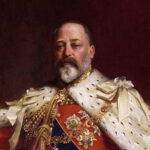
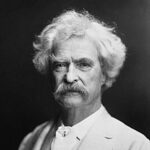 and painful death by way of the poisonous cyanogen gas that was predicted by Flammarion and The New York Times. Their combined irresponsibility cause such horrible chaos, and yet they walked off scot free, while lives were lost due to their blatant irresponsibility. Most people know that you don’t stand up and yell, “Fire!!” in a crowded theater, but somehow they totally miss the point when it comes to scaring people just to sell a newspaper. The Earth’s May 19, 1910 passing through the tail of Halley’s Comet, while a very cool event, was nothing more than just that…a very cool event.
and painful death by way of the poisonous cyanogen gas that was predicted by Flammarion and The New York Times. Their combined irresponsibility cause such horrible chaos, and yet they walked off scot free, while lives were lost due to their blatant irresponsibility. Most people know that you don’t stand up and yell, “Fire!!” in a crowded theater, but somehow they totally miss the point when it comes to scaring people just to sell a newspaper. The Earth’s May 19, 1910 passing through the tail of Halley’s Comet, while a very cool event, was nothing more than just that…a very cool event.
 From November 1, 1955 until April 30, 1975, the Vietnam war raged. The United States entered the war on March 8, 1965. It was an unpopular war from the start. Those who protested US involvement felt like it wasn’t our war and we shouldn’t be there. Be that as it may, we were there, and for the time being, we weren’t going anywhere. The war was a long one, but on April 30, 1975, it came to an abrupt end, when Saigon fell.
From November 1, 1955 until April 30, 1975, the Vietnam war raged. The United States entered the war on March 8, 1965. It was an unpopular war from the start. Those who protested US involvement felt like it wasn’t our war and we shouldn’t be there. Be that as it may, we were there, and for the time being, we weren’t going anywhere. The war was a long one, but on April 30, 1975, it came to an abrupt end, when Saigon fell.
At dawn that spring morning, communist forces moved into Saigon, where they received only sporadic resistance. The South Vietnamese forces had collapsed under the rapid advancement of the North Vietnamese. The most recent fighting had begun in December 1974. That was when the North Vietnamese launched a major attack against the lightly defended province of Phuoc Long, which was located due north of Saigon along the Cambodian border, overrunning the provincial capital at Phuoc Binh on January 6, 1975. Despite previous promises, from President Nixon, to provide aid if the communists attacked Saigon, the United States did nothing. The problem…Nixon had resigned from office and his successor, Gerald Ford, was unable to convince a hostile Congress to keep Nixon’s earlier promises to rescue Saigon from communist takeover. The United States had its own set of tumultuous circumstances to deal with at that time.
The lack of response from the United States emboldened the North Vietnamese, who launched a new campaign 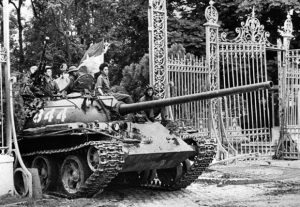 in March 1975. The South Vietnamese forces fell back in total chaos, and once again, the United States did nothing. The South Vietnamese abandoned Pleiku and Kontum in the Highlands with little to no fighting. Then Quang Tri, Hue, and Da Nang fell to the communist onslaught. The North Vietnamese continued to attack south along the coast toward Saigon, defeating the South Vietnamese forces at each encounter.
in March 1975. The South Vietnamese forces fell back in total chaos, and once again, the United States did nothing. The South Vietnamese abandoned Pleiku and Kontum in the Highlands with little to no fighting. Then Quang Tri, Hue, and Da Nang fell to the communist onslaught. The North Vietnamese continued to attack south along the coast toward Saigon, defeating the South Vietnamese forces at each encounter.
The South Vietnamese 18th Division had fought a valiant battle at Xuan Loc, just to the east of Saigon, destroying three North Vietnamese divisions in the process. They were the only division that seemed capable of continuing the fight. That was to be the last battle in the defense of the Republic of South Vietnam. The South Vietnamese forces held out against the attackers until they ran out of tactical air support and weapons, finally abandoning Xuan Loc to the communists on April 21, 1975.
Having crushed the last major organized opposition before Saigon, the North Vietnamese got into position for the final assault. In Saigon, South Vietnamese President Nguyen Van Thieu resigned and transferred authority to Vice President Tran Van Huong before fleeing the city on April 25. By April 27, the North Vietnamese had  completely encircled Saigon and began to maneuver for a complete takeover. When they attacked at dawn on April 30, they met little resistance. North Vietnamese tanks crashed through the gates of the Presidential Palace and the war came to an end. North Vietnamese Colonel Bui Tin accepted the surrender from General Duong Van Minh, who had taken over after Tran Van Huong and had only spent only one day in power. Tin explained to Minh, “You have nothing to fear. Between Vietnamese there are no victors and no vanquished. Only the Americans have been beaten. If you are patriots, consider this a moment of joy. The war for our country is over.” Of course, this also meant that Vietnam would be a Communist country, like it or not.
completely encircled Saigon and began to maneuver for a complete takeover. When they attacked at dawn on April 30, they met little resistance. North Vietnamese tanks crashed through the gates of the Presidential Palace and the war came to an end. North Vietnamese Colonel Bui Tin accepted the surrender from General Duong Van Minh, who had taken over after Tran Van Huong and had only spent only one day in power. Tin explained to Minh, “You have nothing to fear. Between Vietnamese there are no victors and no vanquished. Only the Americans have been beaten. If you are patriots, consider this a moment of joy. The war for our country is over.” Of course, this also meant that Vietnam would be a Communist country, like it or not.

 My niece, Ashley Parmely, who joined our family when she married my husband’s nephew, Eric Parmely in 2011, is a girl of many talents, and amazing patience. When Eric first brought her to meet us, we liked her instantly, and then as we watched their pictures on Facebook, we could see that Ashley was raised in the country with horses. I thought that was cool, but that was really the tip of The Ashley Iceberg. Ashley loves all things country living. She loves all the animals, from chickens to ducks, from goats to horses, and of course, you have to throw in cats and dogs, but lots of people love animals. Ashley takes that one step further, in that she works hard to help her animals have babies, because that is a great way to grow your farm…and after all, babies are great, and according to Ashley, it doesn’t matter if they are human or animal. Yes, all babies are great, and Ashley loves each and every one of them.
My niece, Ashley Parmely, who joined our family when she married my husband’s nephew, Eric Parmely in 2011, is a girl of many talents, and amazing patience. When Eric first brought her to meet us, we liked her instantly, and then as we watched their pictures on Facebook, we could see that Ashley was raised in the country with horses. I thought that was cool, but that was really the tip of The Ashley Iceberg. Ashley loves all things country living. She loves all the animals, from chickens to ducks, from goats to horses, and of course, you have to throw in cats and dogs, but lots of people love animals. Ashley takes that one step further, in that she works hard to help her animals have babies, because that is a great way to grow your farm…and after all, babies are great, and according to Ashley, it doesn’t matter if they are human or animal. Yes, all babies are great, and Ashley loves each and every one of them.
And speaking of babies, Eric and Ashley have three of their own…daughters, Reagan and Hattie, and son, Bowen. If Ashley’s life wasn’t full before, putting three children in the mix has filled her home with love and laughter. Ashley is such a great mom. She is patient and loving with the kids, and they are well behaved little sweethearts, who have great imaginations, and who aren’t afraid of hard work…even if it’s cleaning up after the animals. These kids will be capable country kids who share their parents’ love of animals and don’t mind the work that goes along with it. When children are raised around animals, they naturally develop a love for them…they are like family. Ashley is passing on the things she grew up with, and the family, including her husband, Eric, are thriving on it. Some people just seem to love country living, and for Ashley, it is just the tip of the iceberg. Nevertheless, with all the love in her home, I’m surprised the iceberg isn’t melting, but there’s still more to it.
Sometimes, I have to wonder if Ashley’s life is largely chaos, and I’m sure that sometimes it really is, but Ashley is such a patient person, and somehow, I think she thrives on the chaos around her. It’s almost like 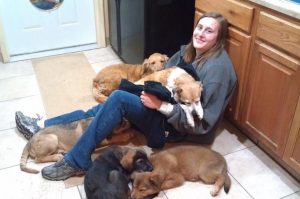
 having so many babies is like having a house full of love…even if only three of the babies are human. As I said, for Ashley, babies are babies. And Ashley, like an iceberg, is not just what you see on the outside, but is rather a deep person with many talents, that she is sharing with her family, and what a blessing that is. Today is Ashley’s birthday. Happy birthday Ashley!! Have a great day!! We love you!!
having so many babies is like having a house full of love…even if only three of the babies are human. As I said, for Ashley, babies are babies. And Ashley, like an iceberg, is not just what you see on the outside, but is rather a deep person with many talents, that she is sharing with her family, and what a blessing that is. Today is Ashley’s birthday. Happy birthday Ashley!! Have a great day!! We love you!!

